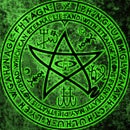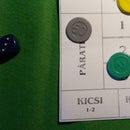Introduction: Build Stork, the Easy But Amazing Flying Wing!
Why is it easy? Because you can build it in ten minutes (the exact
time depends on the glue), using a pair of scissors, an A4 cardboard sheet, some glue and a 15-20 cms stick.
And why is it amazing? Because this model may glide surprisingly far; when balanced well, the flying path may be 30-40 meters. I've tested this small model in a large gymnasium, and it flew from wall to wall.
Since the building time is so short, this model may be built multiplied to keep an airplane contest in a classroom or a camp meeting, too.
I found the original version in a classroom activity page, and made some of them for my special students in the school, then edited a bit and named "Ciconia", what means "stork" in Latin, because this small flying wing glides like a stork.
Step 1: Tools & Materials
Tools
-scissors
-pencil
-glue
-ruler
Materials
-An A4 sheet cardboard, NOT copy or light printer paper. It mustn't be too floppy.
-A wooden stick, lenght is cca 15-20 cms. (We use coffee-sticks from StarBucks, but you can also find other similar ones, for example barbecue sticks, creative shop balsa stick, or any...)
Attachments
Step 2: Assembling
Download the plans, and print it onto the A4 sheet. If you want, you can draw a copy with ruler and pencil, to edit and modify the face of Ciconia. But you may also rename it - try the name "Grus" - this is the crane, an other long neck bird in Latin...;-)
After the ornitology, grab a pair of scissors, cut the wing itself, and the 2 pcs. vertical stabilizers. At the dotted lines you should fold them in 90 degrees to get a small surface for the glueing onto the main wing.
For this operation push your ruler on the dotted folding line to deform the stabilizer at the necessary line. After it you can already fold it exactly in 90 degrees. Repeat this on the other stabilizer, and on the dotted lines at the tips of the main wing below the "Ciconia" writing. (But DON'T fold the main wing at the centre! That line shows the place of the stick.) The wing tips must be folded 45-50 degrees up, not 90, but they must be set symmetrically. With this angle this small modell will follow the smaller air turbulences or other anomalies around itself, and will be able to set back the wings to a horizontal position, which is important for the long flying path.
Now take the stick, and glue it below the central dotted line, at the bottom side of the wing, from the rear to the nose. And avoid to glue the stick to the horizontal stabilizer, or what the name is that small surface at the rear of the wing.
At the nose let cca. 10-15 cms to point forward. Now cut the balance, roll it on a pencil, or the fuselage stick itself, and strenghten it with some glue; this is the balance weight on the nose.
Pull it on the nose, but press it a bit, if necessary, to avoid the unwanted moving of it on the stick. This weight must be remain firmly on the nose, but don't glue it, because you will balance the model pushing-pulling it. At its final position, after the setting and balancing you may fix it.
Step 3: Setting, Balancing and Flying
Well, now you have a flying wing with symmetrically upfolded wing tips cca. 40-50 degrees, with two vertical stabilzers in 90 degrees, and a storch-nose stick with a rolled balance on its end. This is Ciconia itself.
For the optimal flying you should balance it. Grab the bottom spine of the model at the middle of the wing, and throw it softly forward, a bit downward, and look how it sinks. At a quick sinking pull the balance towards the wing, while the model advances with the minimal sinking. At a pumping, bobbing flying pull the balance forward, to increase the distance between the wing and the balance. The optimal flying path is almost a horizontal line with a little sinking.
When ready, carefully flip the rear tab up with some degrees; you will see the model will lift its nose, but after it will lose the speed, and begins to go towards the ground. At the down flipping you may balance the pumping movement of the model.
Find the optimal position of the roll balance AND the stabilizer tab to keep Ciconia on the best flying path. This may keep some minutes to find it, but it worths, because the model will produce a very amazing flying.
This was the one of the axises. The other is balanced with the wing tips and the vertical stabilizers, but here I recommend you not to try any steering, just set the perfect symmetry as I mentioned, to gain a perfect straight flying path. While your model turns out to left or right, the balance is not ready.
But when ready, you'll have a very good small flying wing-style paper model for indoor or outdoor using. With a stronger throwing it can even loop. Never aim towards any human or living animal, living dead, inhuman or fragile alien creatures when throwing.














